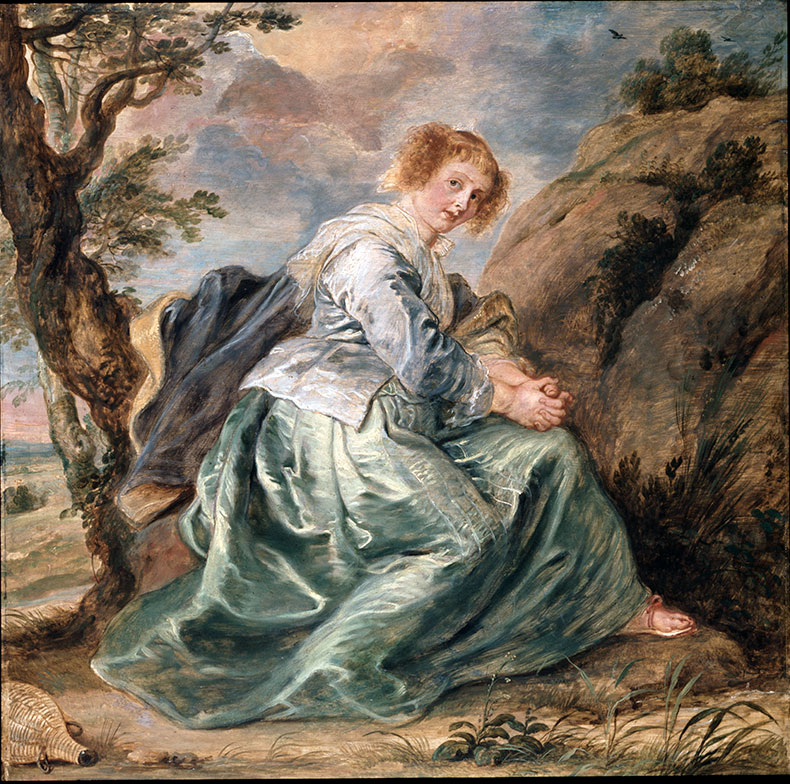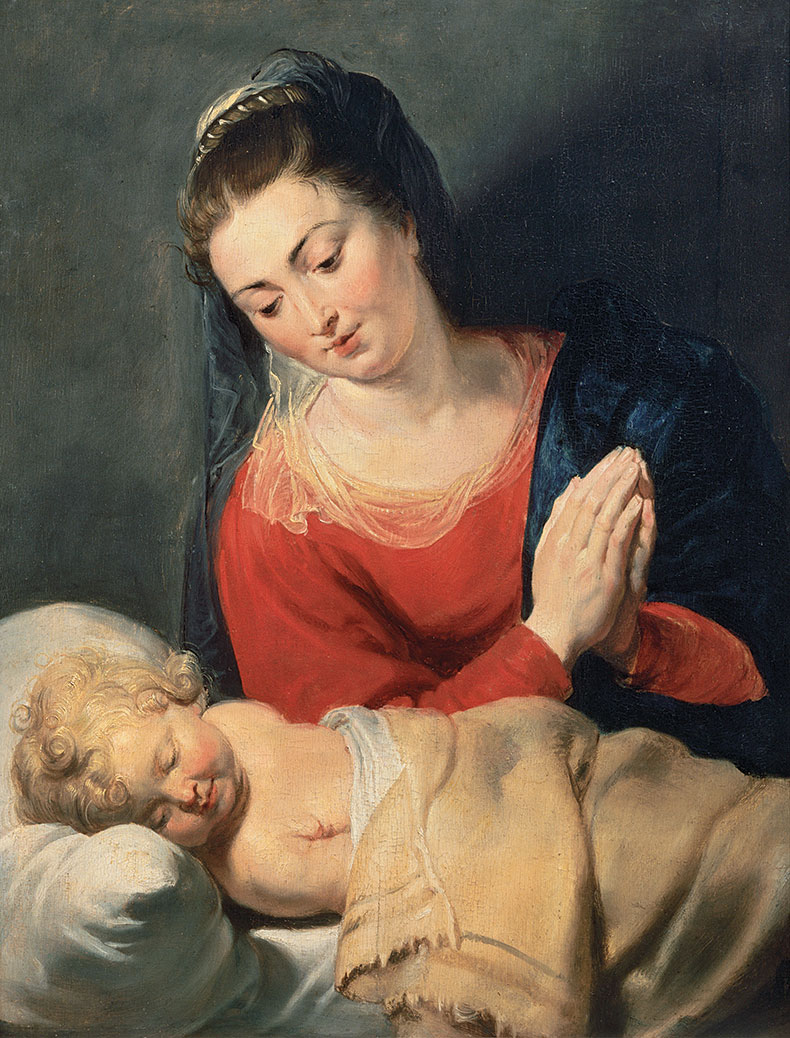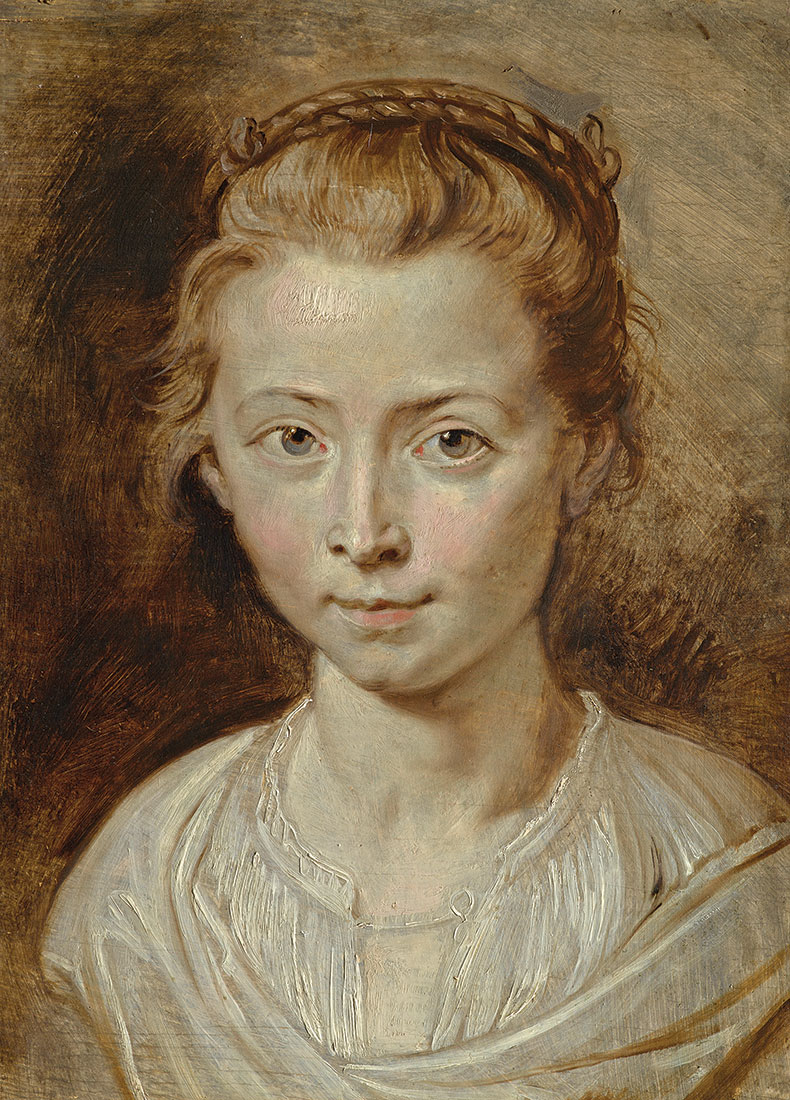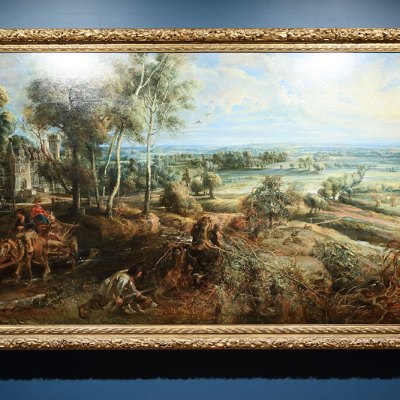From the October 2023 issue of Apollo. Preview and subscribe here.
Rubens’s second wife, Helena Fourment, wasn’t quite sure what to do with the most striking painting her late husband had made of her. The painter had left Het Pelsken (The Fur) of 1638 specifically to Helena, marking it out as private work with a pet name, but was she meant to keep it that way? In the will she made in 1658, Helena bequeathed it to her second husband ‘as a keepsake’, but evidently changed her mind, stipulating in a later codicil that it was to go to her voorkinderen and not the children of her second marriage. It’s not hard to see the problem: in the full-length painting a naked woman stands wrapped in – but not exactly wearing – a fur pelt; she is turning towards us and looking directly at the viewer. Its whereabouts after Helena’s death in 1673 are unclear, but it eventually came to lead a much more public life in the imperial collections in Vienna, where, in 1730, it was described in an inventory as ‘a large painting in which Rubens depicted for himself his wife’.
Het Pelsken (The Fur) (c. 1636–38), Peter Paul Rubens. Kunsthistorisches Museum, Vienna

This wasn’t the first time Rubens would put his wife’s likeness in a painting – and Het Pelsken is perhaps more of a portrait historié than a work for which Helena posed. There was, however, a big difference between depicting her in a work that hung in the couple’s own house in Antwerp and in, say, a commission for the Spanish court. At around the same time as he was working on Het Pelsken, Rubens painted The Judgement of Paris that now hangs in the Prado. Giving his verdict to his brother Philip IV, the governor of the Netherlands was full of praise for the finished work. However, he added:
It has only one fault, the goddesses are too naked, but it is impossible to persuade him [Rubens] to correct this, as he maintained that it was essential for the appreciation of the painting: Venus in the middle is a portrait of his wife and the likeness is extremely good; she is without doubt the most beautiful here.
As Amy Orrock writes in a catalogue essay for ‘Rubens & Women’ at Dulwich Picture Gallery (until 28 January 2024), the likeness would have gone undetected in Spain, where no one had met Helena. However its detection by someone who had may have led to it being hung not in the official royal residence of Alcázar but in the Buen Retiro, ‘a relatively obscure residence outside Madrid’. Rubens was by now part of the nobility and his wife technically a member of the Spanish court where ladies did not lend their faces to fleshy goddesses.
Hagar in the Desert (c. 1630s), Peter Paul Rubens. Dulwich Picture Gallery

The title of the show at Dulwich is wonderfully open-ended and the use of the conjunction rather than a preposition or a possessive wonderfully careful. ‘Rubens’s women’ and ‘Women in Rubens’ are all obviously problematic; inserting a definite article takes us somewhere else altogether (a late novel by Kingsley Amis, perhaps). ‘And’, however, is perfectly safe for a 21st-century audience: mysterious enough to be intriguing. And, what the curators Amy Orrock and Ben van Beneden are perhaps hoping to achieve, more than anything, is an expansion of what the word ‘Rubenesque’, an adjective coined in the 19th century, might mean to a modern audience.
While Helena’s likeness can be found in the mythological pictures and a biblical scene such as Hagar in the Desert of the 1630s (where Hagar is also a follower of 17th-century Flemish fashion), Rubens’s first wife Isabella Brant lends hers to quieter compositions. In The Virgin in Adoration before the Christ Child (c. 1616–19), the Virgin may be lost in contemplation of her sleeping son, but she is the figure who is the focus of our attention. Isabella makes a much slyer appearance in Diana Returning from the Hunt (c. 1623), a painting Rubens made with his friend Frans Snyders. Here, Rubens painted the figure while Snyders, a still-life and animal specialist, tackled the fruit carried by some satyrs and the game birds Diana has bagged. Clad in a red chiton and with bared Amazonian breast, Diana – like some kind of divine bouncer – divides the leering satyrs on the left of the scene from the nymphs who are standing behind her. Two of her companions have an air of wanting to be anywhere than here, but the third – on the right edge of the painting – looks directly at us and is the only figure in the scene to do so. Here, again, is Isabella Brant, this time exchanging a wry look with her husband – or at least I like to think that Rubens was imagining her doing so.
The Virgin in Adoration before the Christ Child (c. 1616–19), Peter Paul Rubens. Snijders & Rockox House, Antwerp

The house Rubens bought in Antwerp in 1610, two years after his return from Italy and a year after he married Isabella Brant, is currently closed for renovations as it puts in some of the facilities that will help it cope with more than 200,000 visitors a year. As Van Beneden – who was director of the Rubenshuis for many years – explains to a group of journalists standing in its courtyard in July, the house tells us a good deal about how Rubens wanted to be seen. It was the site of his workshop, but also a semi-public museum where the artist kept antique sculptures in a circular hall modelled on the Pantheon; the garden portico takes the form of a triumphal arch and the central gateway imitates Michelangelo’s Porta Pia in Rome. (In painting Isabella Brant with the portico in the background as a gift for Rubens in 1621, Van Dyck seems to have known what would most please his master.)
Clara Serena Rubens, the Artist’s Daughter (c. 1620–23), Peter Paul Rubens. Private collection

Rubens of course painted many straightforward portraits of his family – more than any other artist of his time, Van Beneden points out. Unusually, he never painted himself in the guise of a painter, but as the affluent burgher and then aristocrat he aspired to be. Portraits of his eldest daughter Clara Serena, who died at the age of 12, bear a marked resemblance to her mother; Isabella was to die three years later in 1626, possibly from the plague. Explaining his decision to marry the middle-class Helena, Rubens writes to a friend: ‘[…] I feared Pride, that inherent vice of the nobility, particularly in that sex, and that is why I chose one who would not blush to see me take my brushes in my hand.’ He adds, less sympathetically, ‘And to tell the truth, it would have been hard to exchange the priceless treasure of liberty for the embraces of an old woman.’ Rubens was 53; Helena Fourment was 16. No wonder she had to think twice, years later, about what to do about a painting of her sporting only a fur.
‘Rubens & Women’ is at the Dulwich Picture Gallery, London until 28 January 2024.
From the October 2023 issue of Apollo. Preview and subscribe here.


